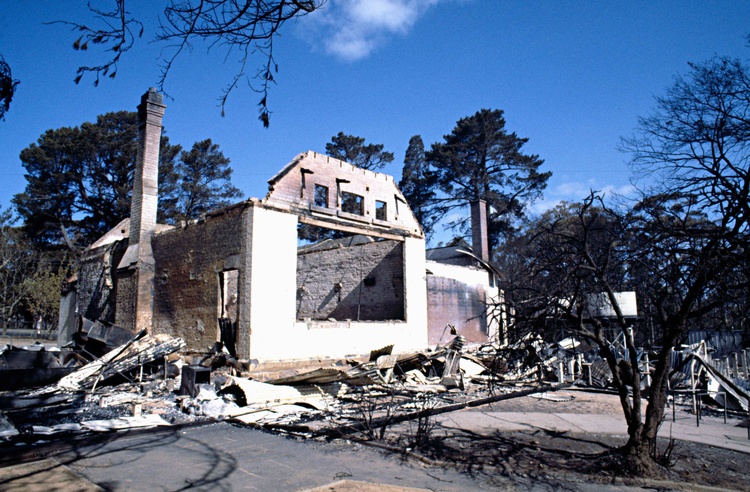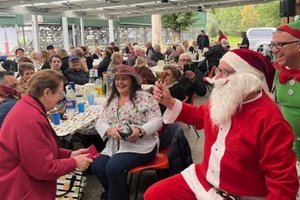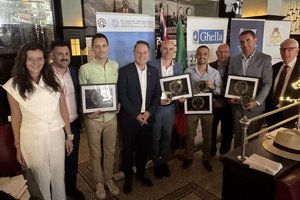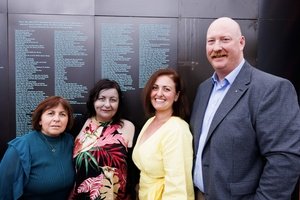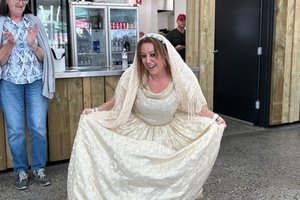The following is a personal reflection 40 years on. Hopefully it may contribute to helping the healing. Also, to recognise the courage and resilience of many thousands of people impacted in some way during those fires. The reflection acknowledges the strength of community when it comes together.
Remembering the Ash Wednesday fires, means recalling the dark, red ash and thick smoke swept up by the dry hot wind and spread wide across the landscape.
The ash seemed to suddenly roll over the land. It created a grey-crimson sky as the ash made its way into suburbia like ominous dark moths swirling in the wind. It was thick, sticky and settled on parked cars, children’s playgrounds, and any washing left out to dry.
The ash reminded us of the many fires that burned across both Victoria and South Australia. The severe drought over the many preceding months provided the perfect tinderbox conditions during that heatwave in 1983.
It doesn’t seem that long ago, but the 16th of February, 40 years ago, remains etched in our own family’s history – as it does for many. As a family, we don’t mention that period really, especially around papà. And he doesn’t say much either. It is the only topic on which he, normally a very chatty person, remains quiet.
If you ask him what happened, he will only shake his head, mumble “terrible, terrible” and shuffle along to his beloved orto (vegetable garden). His happy place.
The Ash Wednesday event were made up of around 180 individual fires. They sparked and flared ferociously before many could be stopped. They proved a nightmare, and the trauma lives on today for survivors, their families and the many people that were involved in the firefighting, as well as the rescue and recovery work.
The fires raged in so many places: around Warrnambool, the Dandenong Ranges, Warburton and the Otway Ranges. Also, across the border in South Australia.
Hundreds of thousands of acres of land were burnt in such a short time. Farming, stores, homes, businesses, cars, possessions – all were razed to the ground, or left smoking in the fire’s wake. In Victoria, 2000 homes were lost and a few hundred more over the South Australian border.
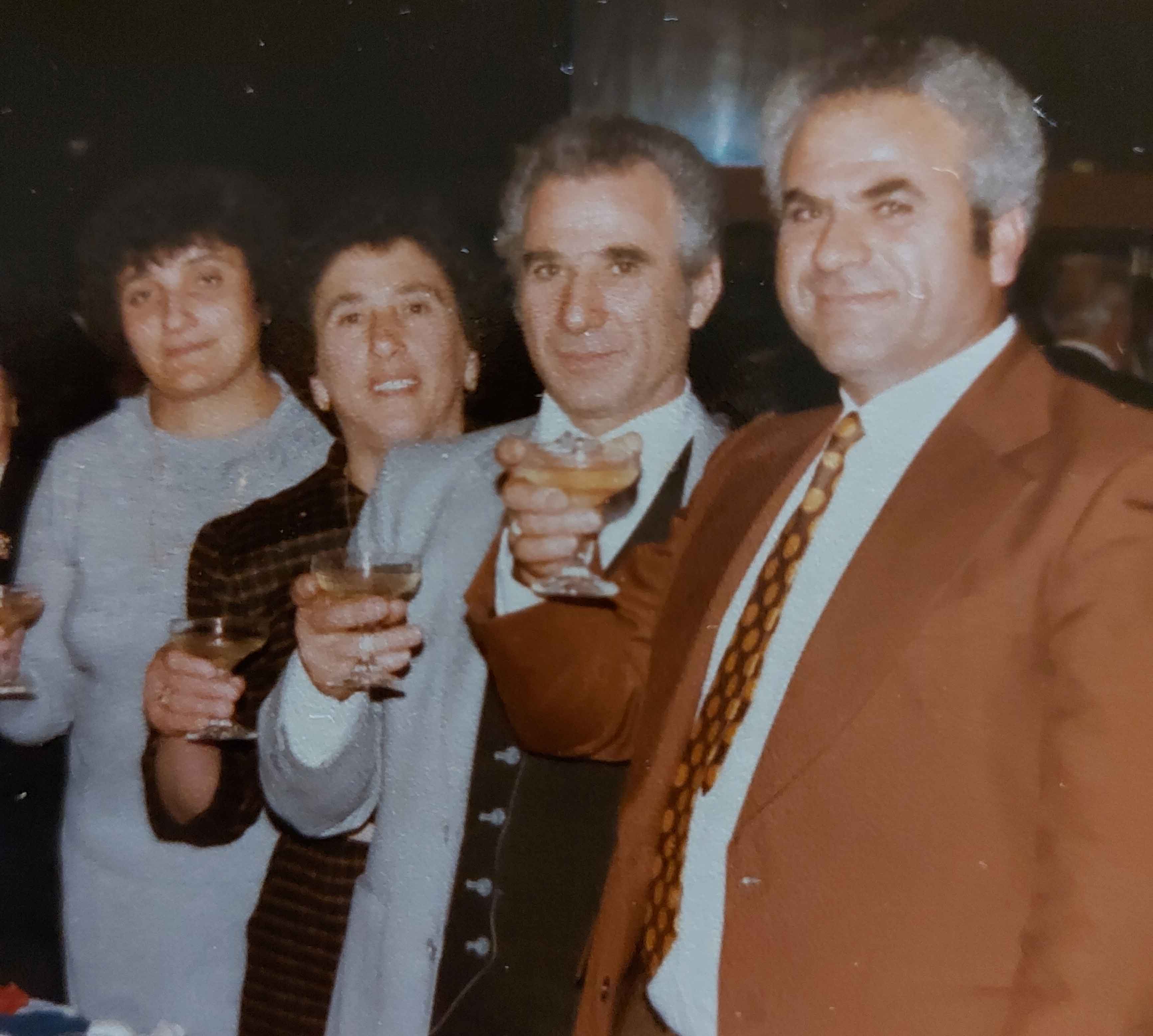
Pasquale (Charlie) De Fazio with his brother Giovanni, on his left, his wife Maria and sister-in-law Anna. (Photo supplied)
It was heartbreaking to see the consequences. People, livestock, wildlife, property all caught up in the raging flames. If Gustav Dore` needed any inspiration for illustrations of a Australian-Dantesque Inferno, the scenes of Ash Wednesday would have provided him with hours of sketching.
There are several memorial events across the States to mark 16th of February, the Ash Wednesday fires. Over this period, people remember and mourn the 75 lives lost, 47 in Victoria and 28 in South Australia.
Also, the many who were injured. 14 Country Fire Authority (CFA) and 3 Country Fire Service (CFS) volunteer firefighters were amongst those tragically lost.
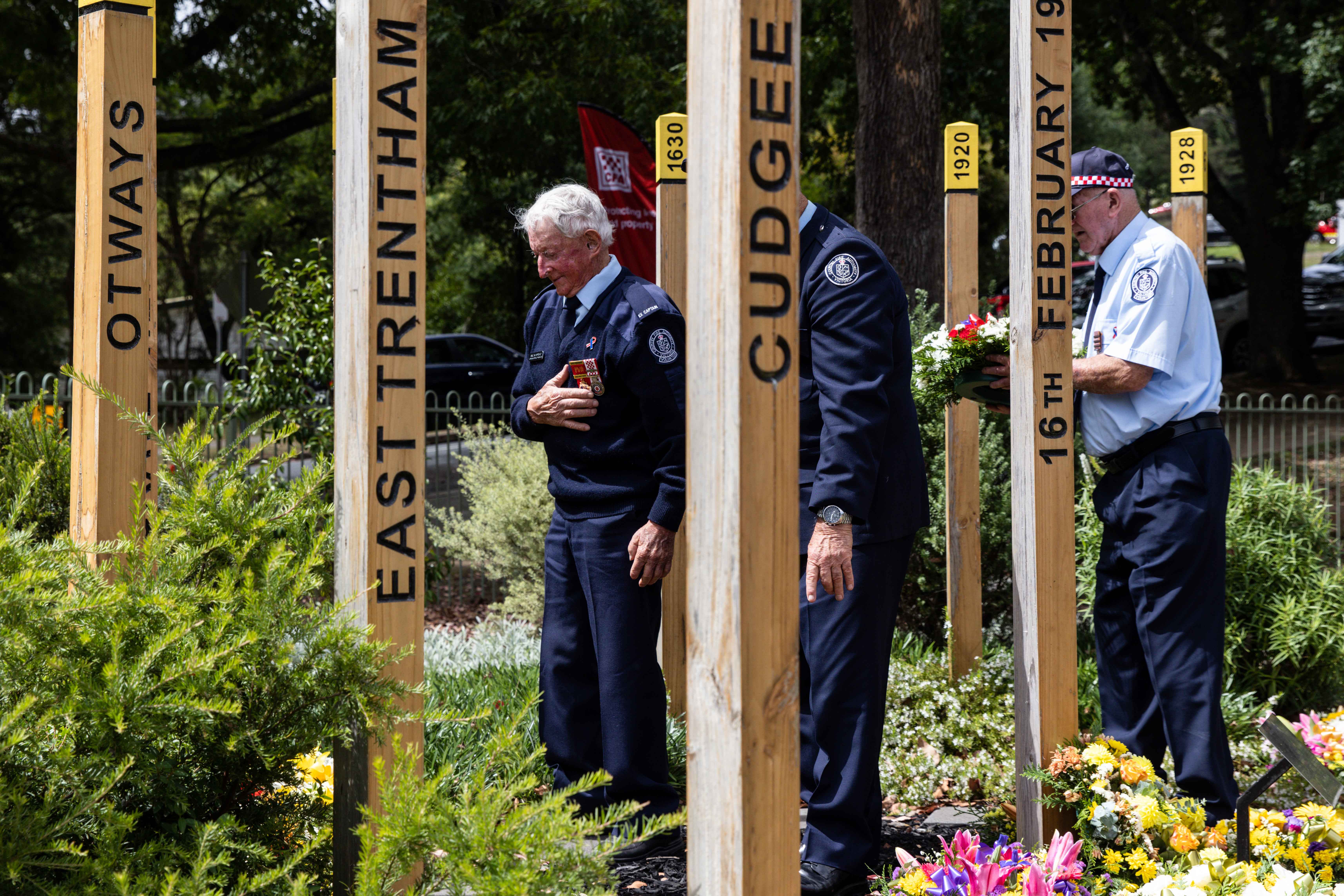
Former CFA member pays tribute to the fallen after laying a wreath during the Ash Wednesday 40th Anniversary Memorial Service at the Ash Wednesday Bushfire Education Centre in Cockatoo. (Photo: AAP)
The fires burned an area twice the size of metropolitan Melbourne. Many of the fires devasted huge areas in just a few hours. Some took two days to control. The efforts of the CFA volunteers and staff, the community and so many services were extraordinary.
My own father was one such CFA volunteer. We lived on a small acreage on the outskirts of Melbourne and, the community was small. Our family and that of a Filipino family down the road stood out as “ethnic”.
The CFA played an important part of the social fabric. Many of the men (in those days it seemed to be only men) volunteered to be part of the CFA. They were always seeking recruits and my dad and our Filipino neighbour were both eager to fit in and do their bit for the community.
When the siren went, the recruits would be seen running down the road to the fire station or rushing down in cars. They pulled and yanked on their yellow overalls as they jumped on one of the two fire trucks that waited for them in the driveway outside the fire station. Then, with sirens going, the truck would race down the dusty unmade roads, normally to come back after an hour, two, maybe even three.
When the siren rang out on Ash Wednesday no one had any idea about the extent and severity of the fires.
I was young and remember mamma (mother) looking very worried that evening when dad didn’t come home. She went off to the fire station and was told not to expect him home for a few days. So, we waited.
Then papà seemed to suddenly reappear. There was no greeting. His face was drawn, his face and arms were all dark and sooty. He didn’t say anything except to ask me to bring him glass of vino and all I remember is that I heard hushed voices behind me. My mother carefully bandaged his arm.
The tone at the dinner table was subdued. Dad sat quietly. No chatter, no questions. He seemed lost in thought – or maybe he was just exhausted? Suddenly he exclaimed – “Maria, I never want to see a cup of tea again.” Later I found out that he had asked my mother to throw out everything he was wearing when he came home.
It wasn’t till a few days later that a chance meeting at the local general store provided any clues about what had happened. A neighbour asked if I was proud of my father. I was puzzled by the question. He pointed to the front cover of The Age newspaper.
There in print, was a story about how the CFA crew, of which papà had been a member, had found themselves down a gully near Gisborne. They were one of the only CFA outfits to have a new model four-wheel drive fire truck and so were sent to a place that was called, it seems at the time, Deadly Bridge. The five men battled the fire there, papa was the one holding the hose nozzle. Suddenly a giant tree groaned and came crashing down where they were working. It sent the crew members scattering and shouting. Dad was the slowest as he was encumbered by the hose.
The truck’s side rail was smashed and a large iron cage that stored equipment was crushed. They were hemmed in, the truck behind them, the fire, and the tree in front. Luck, experience, instinct all played a part and they somehow managed to get away. The newspaper article described how they found a clearing and took a moment to come together around a billy to drink tea before resuming their firefighting.
Of course, my father’s story is just one of many. It took a multitude of volunteers, services staff, and communities across the two States to tackle the fires and contribute to the recovery process. This is the paradox. Against the trauma, there is always the resilience of individuals, and the beauty in humanity when a community when it comes together.
A few of the local CFA members came over to check on dad after a few days later. They had finished their shift and popped over, “just for a cup of tea”. Of course, papà took out the homemade vino.
If you find yourself experiencing distress during this time, we recommend you contact Lifeline on 131114 or Beyond Blue on 1300 224 636 which offer support services. Also, CFA members and their families can contact CFA Wellbeing Support Line on 1300 795 711.

